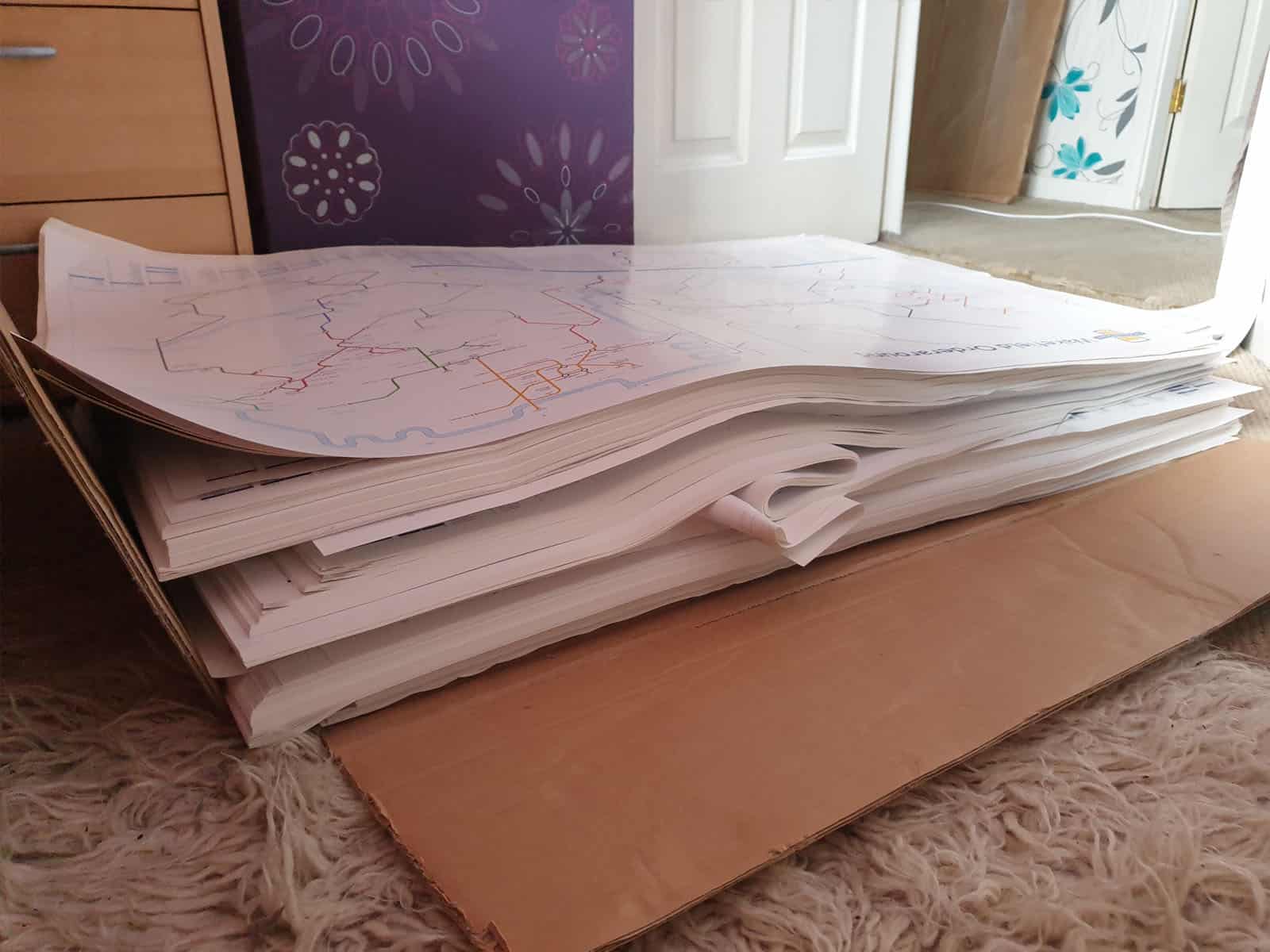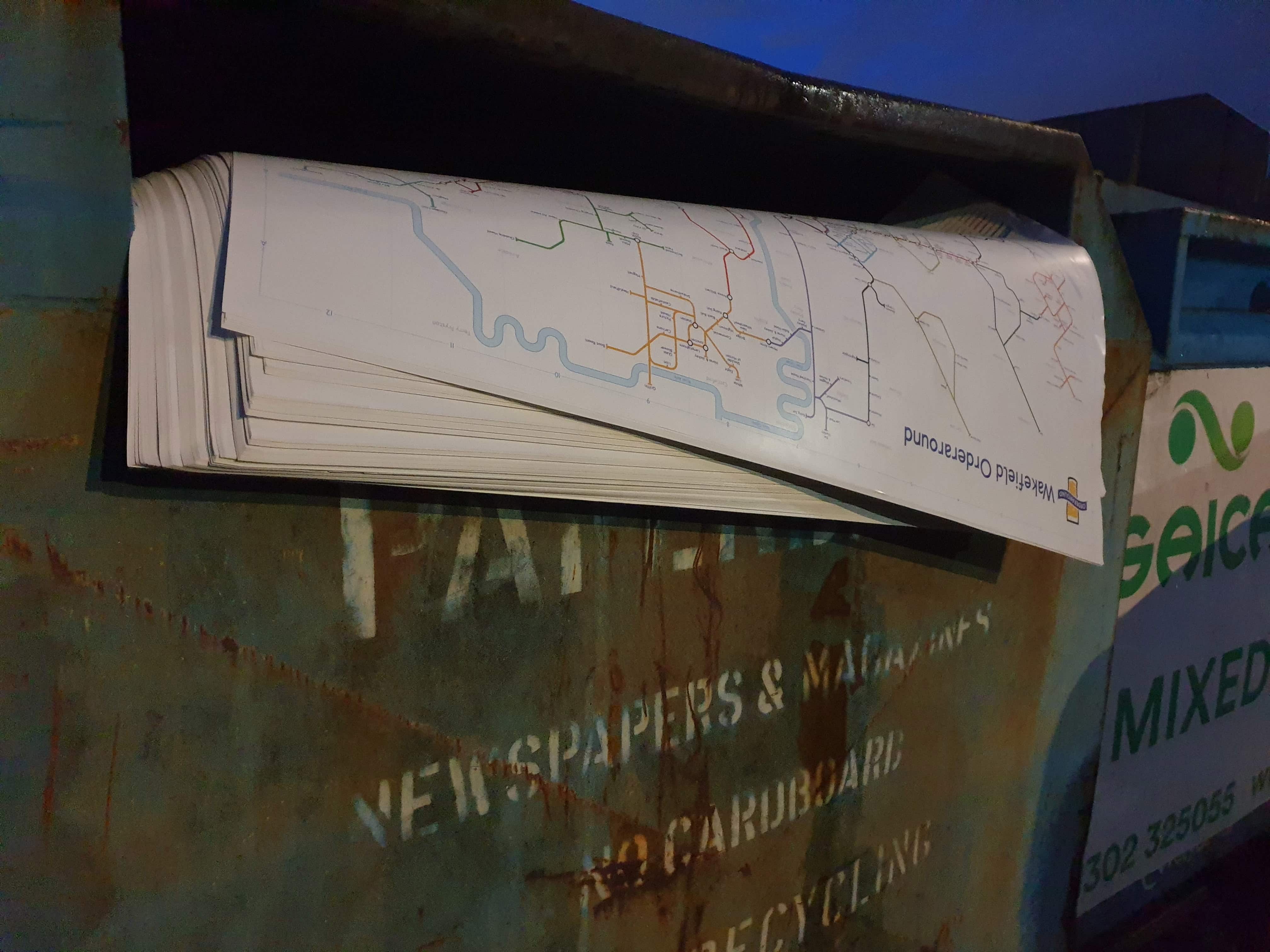
Orderaround is the name I’ve given to maps I make and sell in the style of the London Underground map.
Orderaround also has its own web page and all the maps and updates are over at:
Orderaround.co.uk.
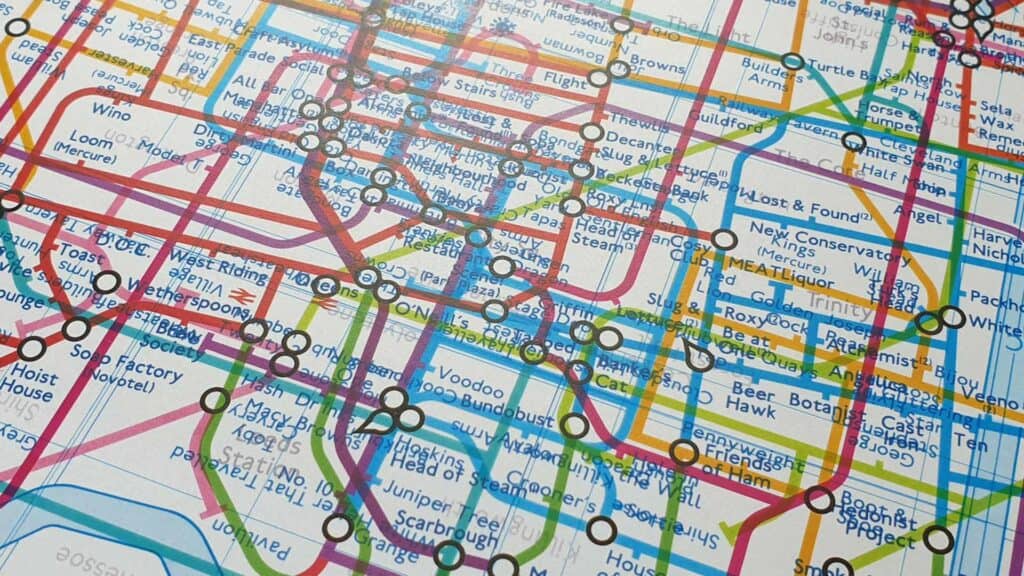
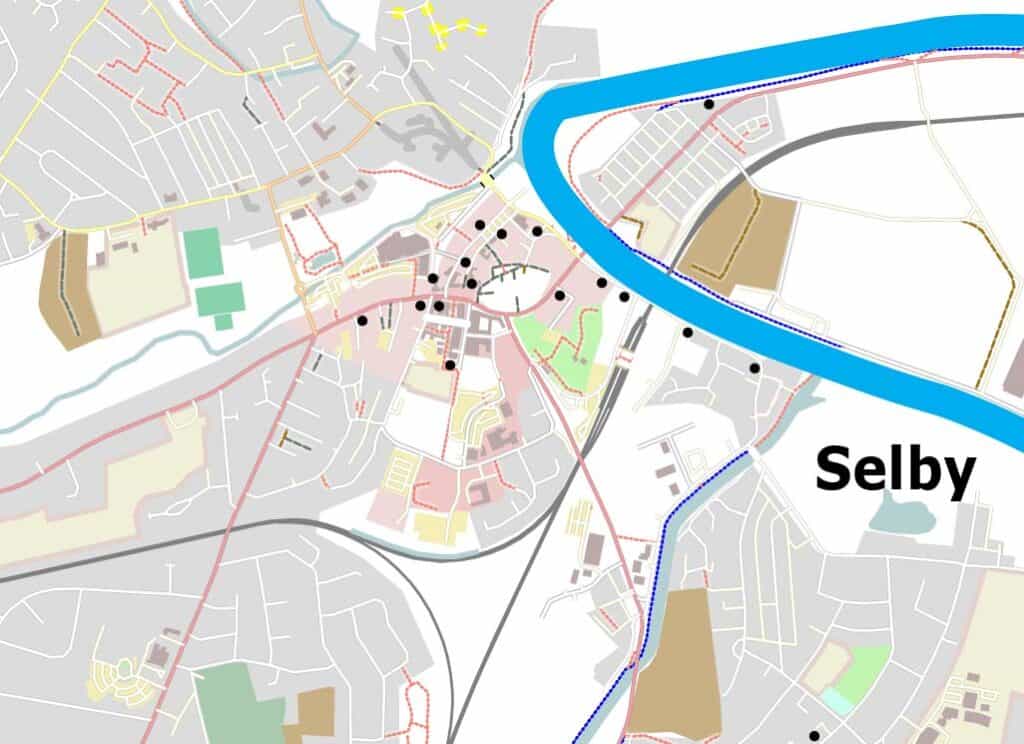
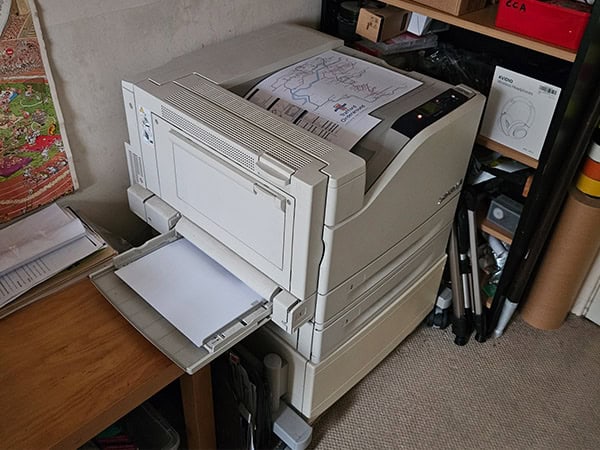
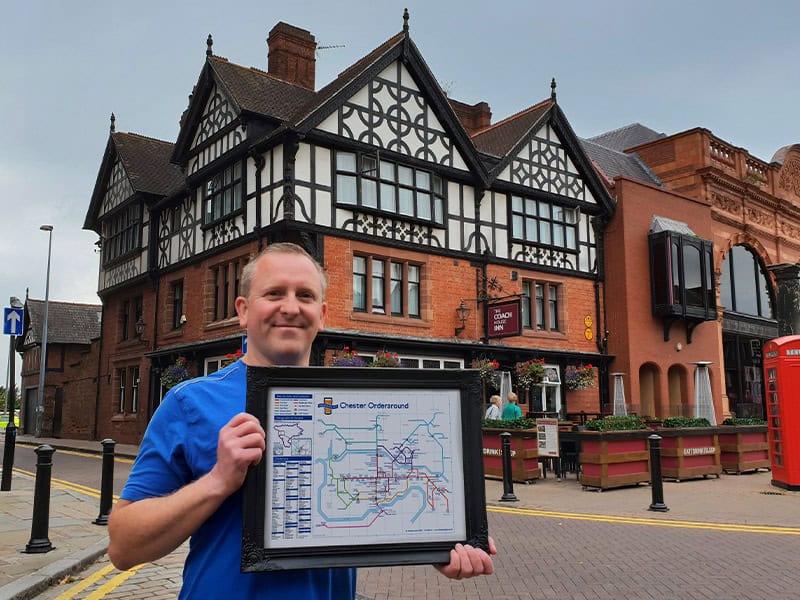
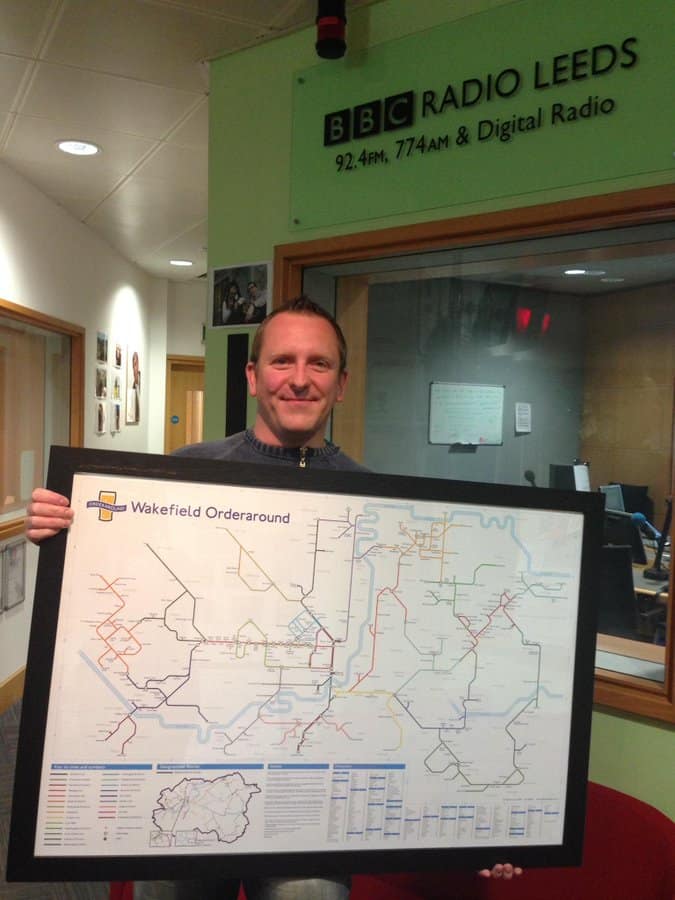
Media & Public Reactions
Lorem ipsum dolor amet consectetur adipiscing elitsed do eiusmod.
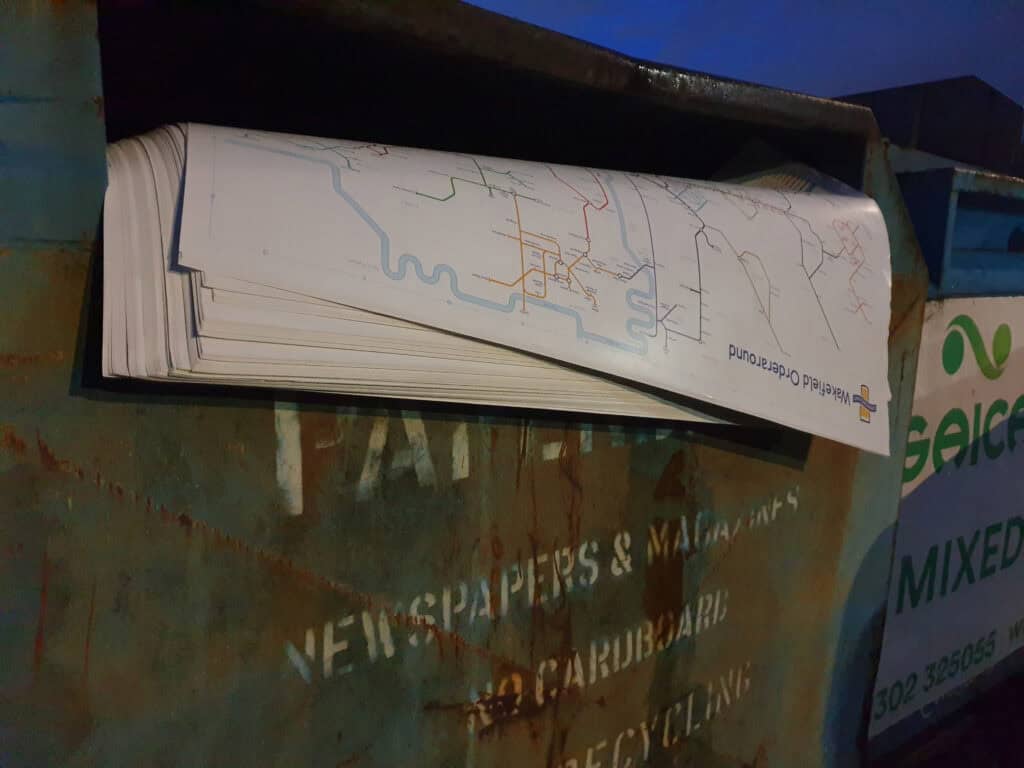
First page ends here
Orderaround is the name I’ve given to maps I make and sell in the style of the London Underground map. All but one of the maps are of pubs and bars. (The one that isn’t, is in a rude shape and made of swearwords.)
I did have this page under the “Digital” section, but it seemed too big and important to just be buried there.
Orderaround also has its own web page and all the maps and updates are over at:
Orderaround.co.uk.
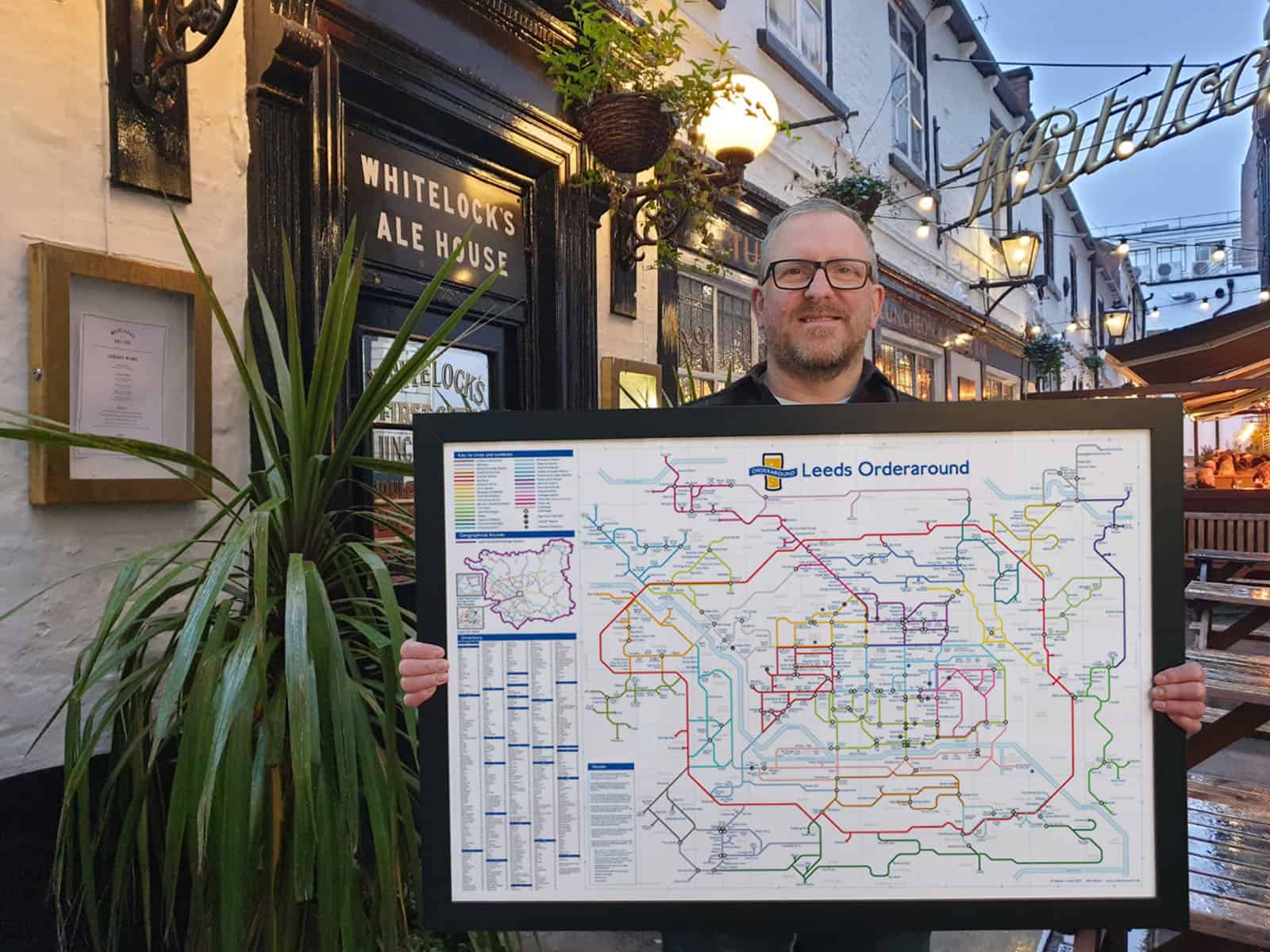
Origins
I’d always liked the design of the London Underground map and in the mid-90s I saw a hand drawn diagram of Wakefield pubs in Harry Beck’s style. It stuck with me and in 2007 I began work on my own for Leeds. It was a much bigger project than expected and I just abandoned it for a few years. I did all kinds of unnecessary development work to start with. Much of which isn’t covered here because I didn’t keep a record of it.
In 2013 I resumed the project, and since then I’ve been making new maps on a fairly regular basis.
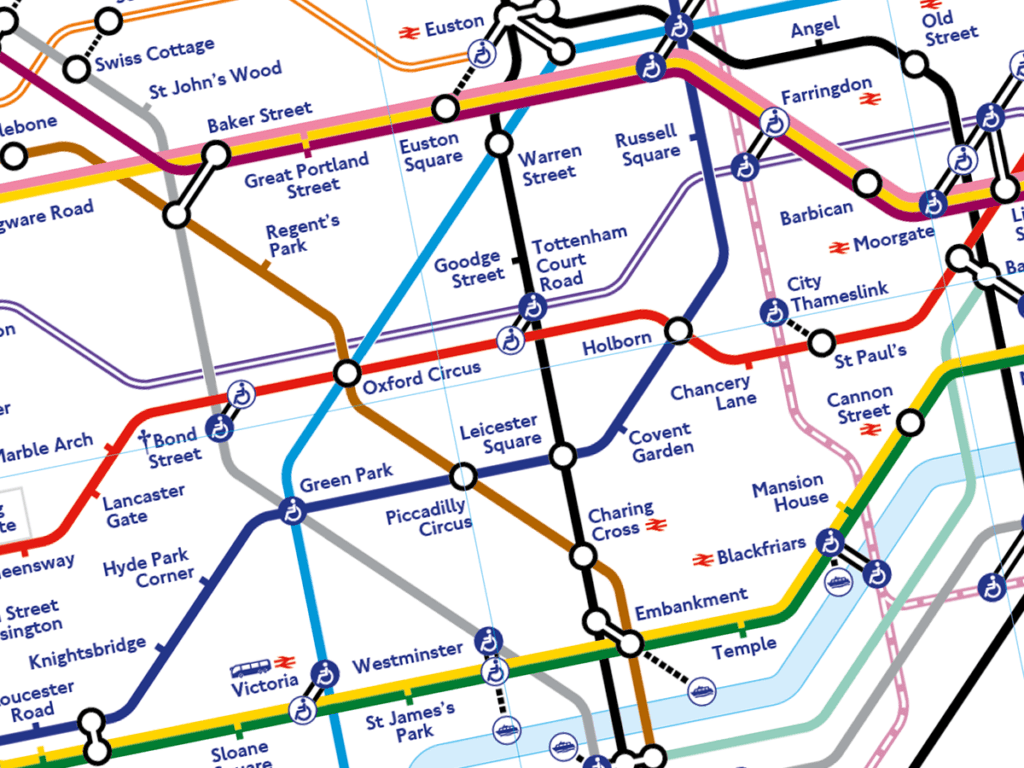
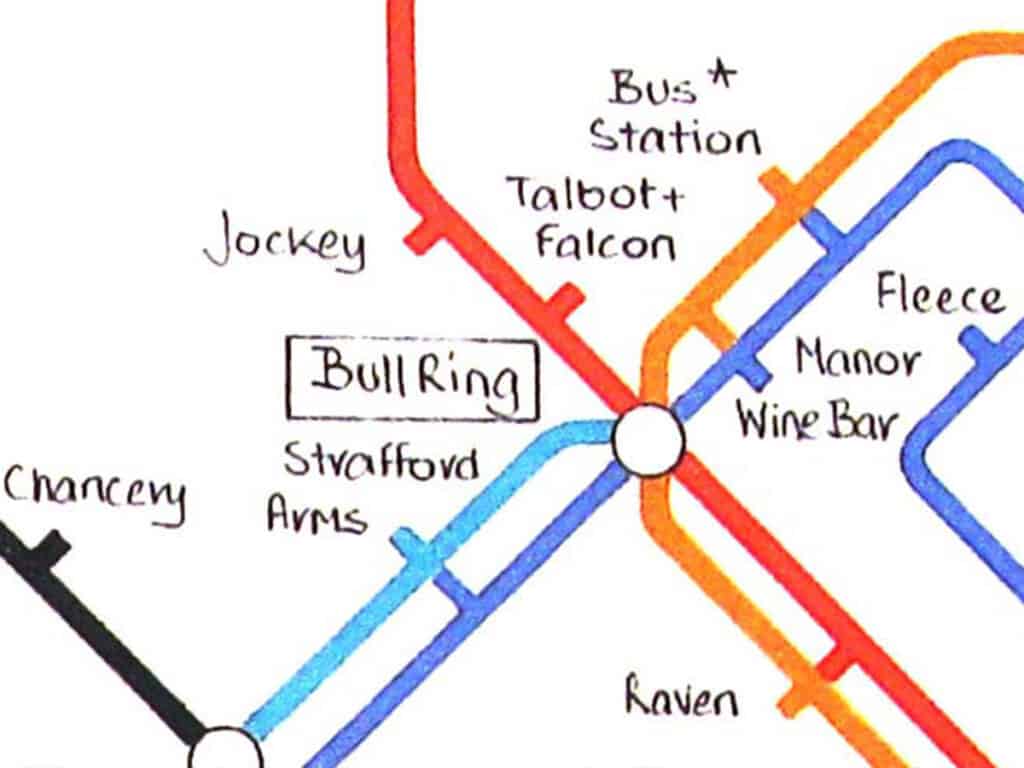
Early ways of working
My initial ways of working were quite poorly conceived and unnecessary.
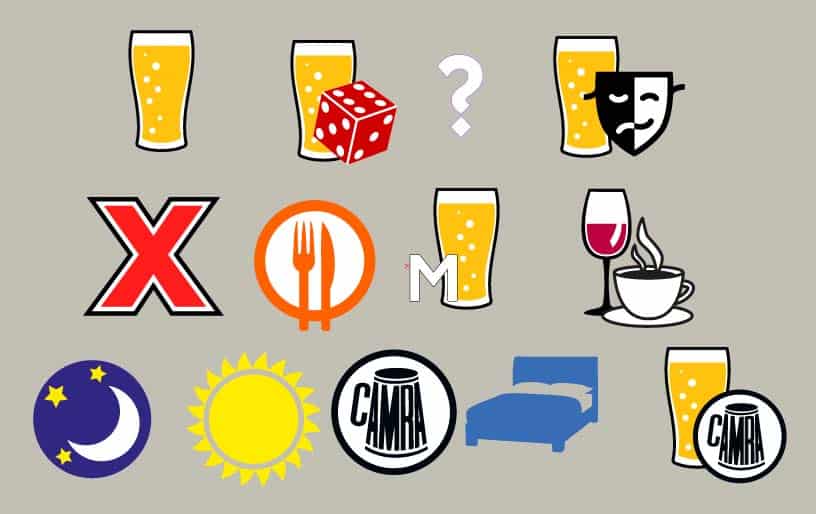
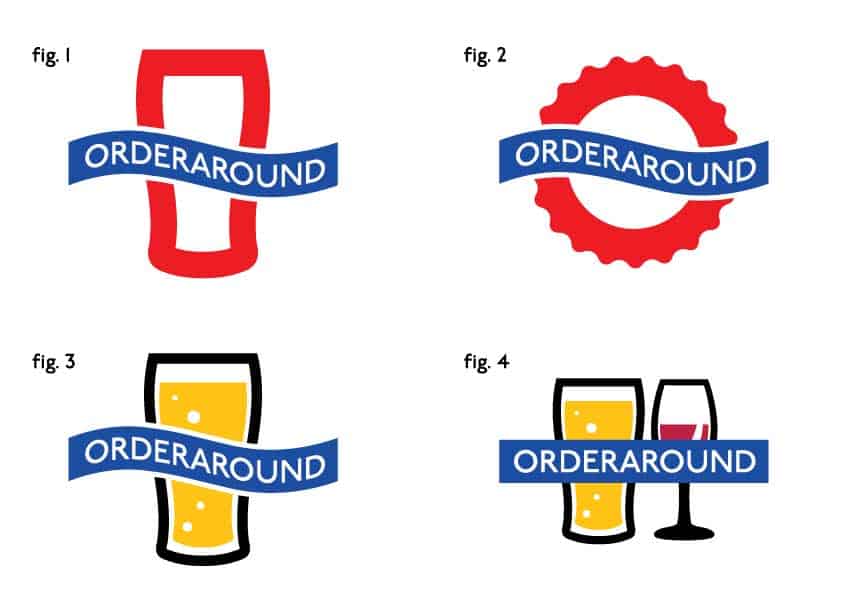
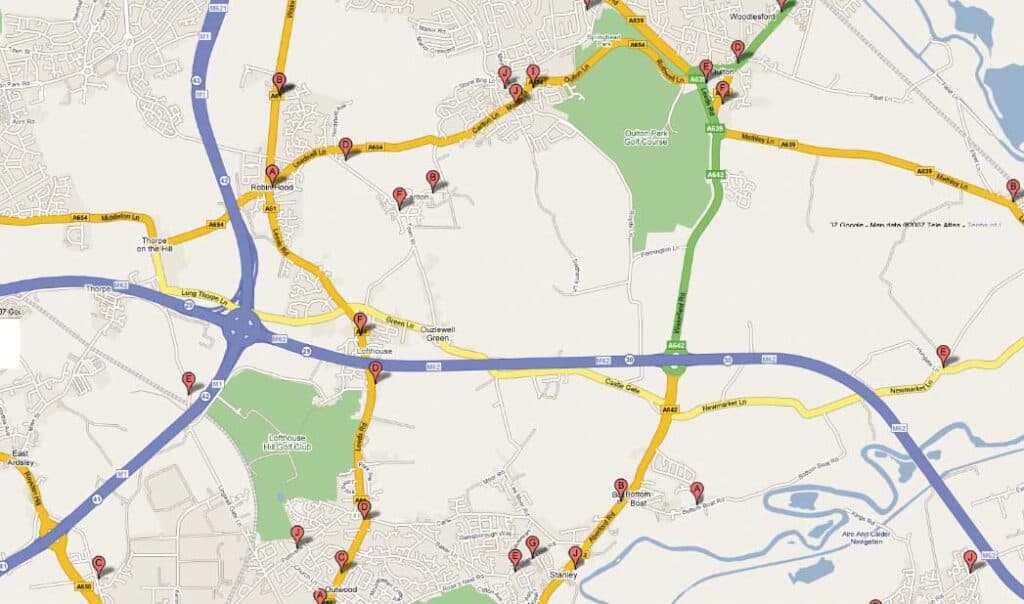
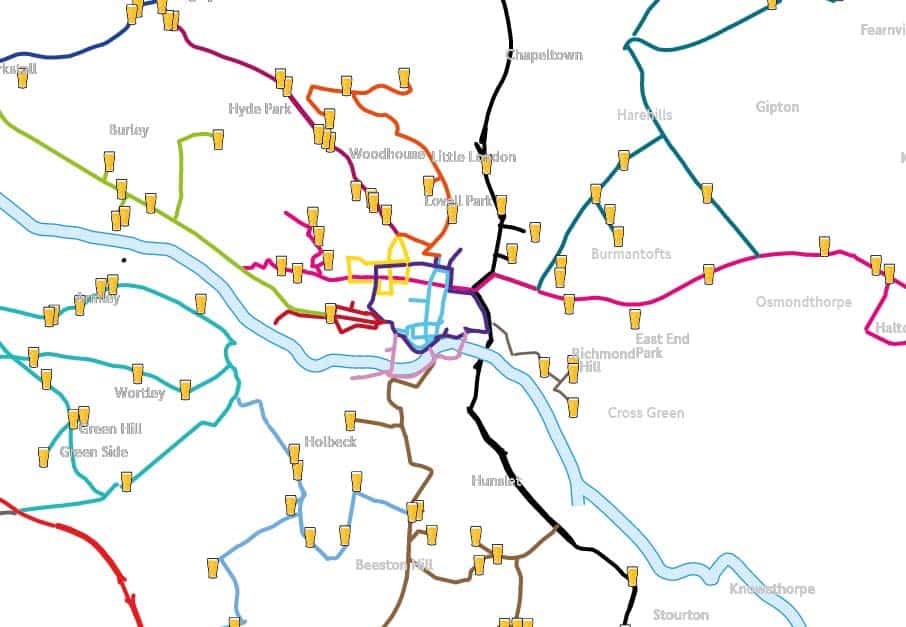
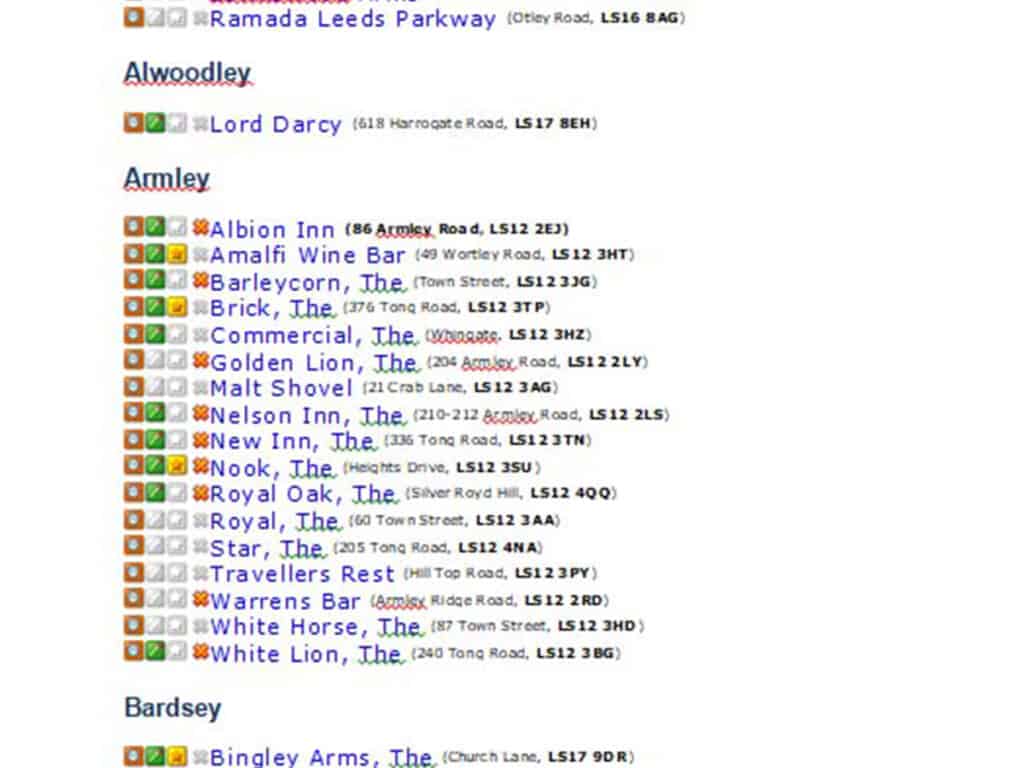
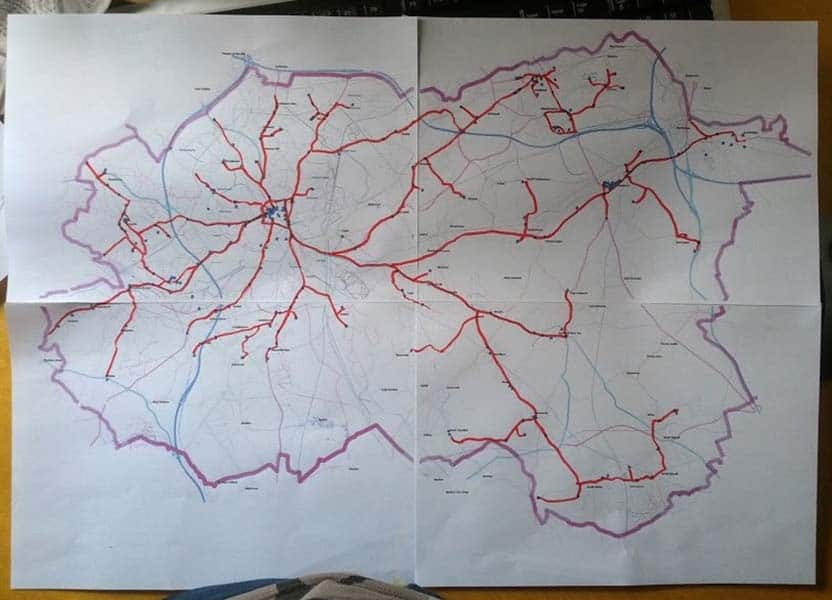
Improving the Process
The methods used for the first two maps (Leeds and Wakefield) were all over the place and even involved doing things on paper. I devised a more efficient way of working but the maps still require a whole lot of work.

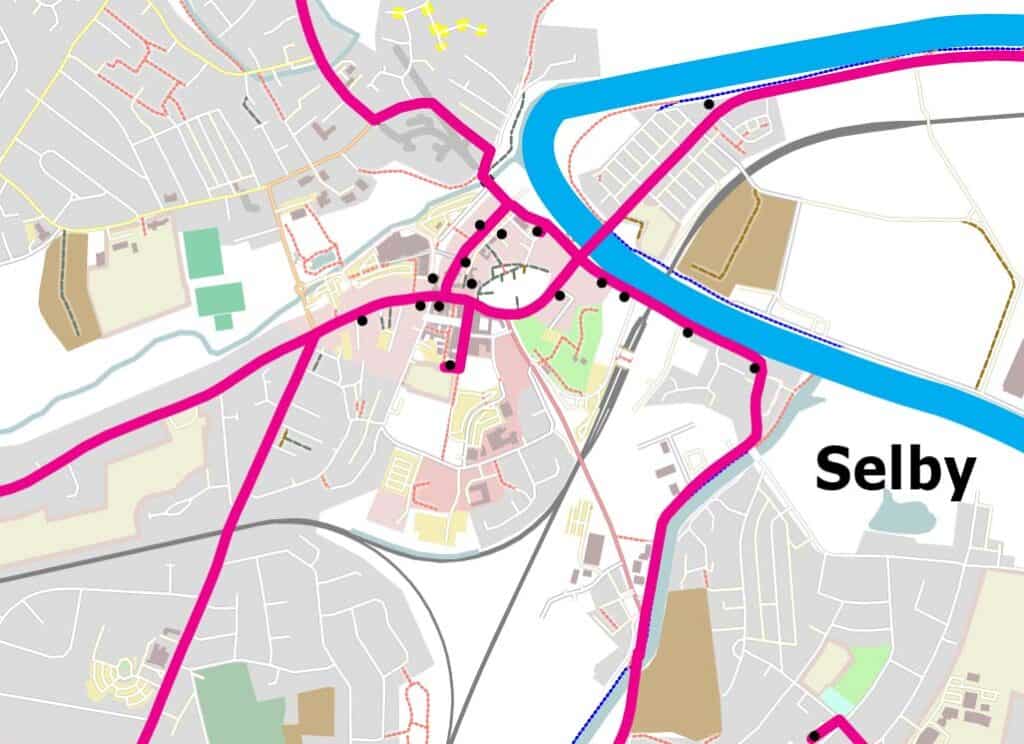
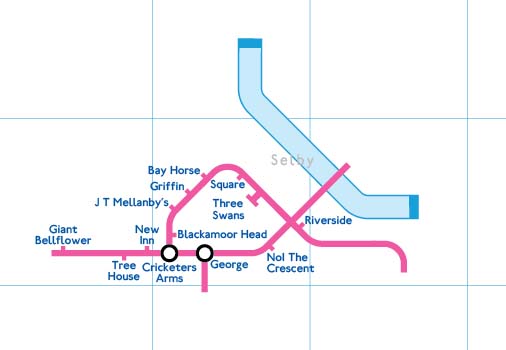
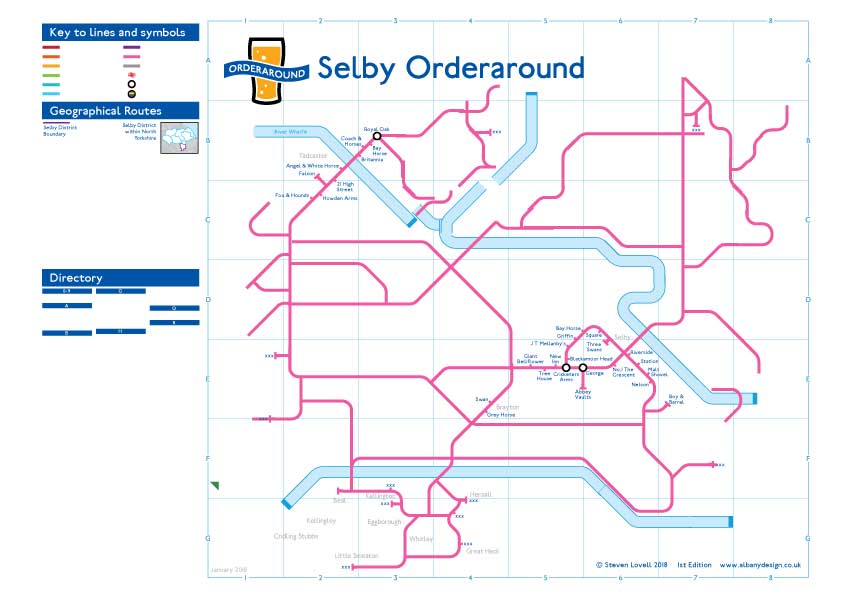
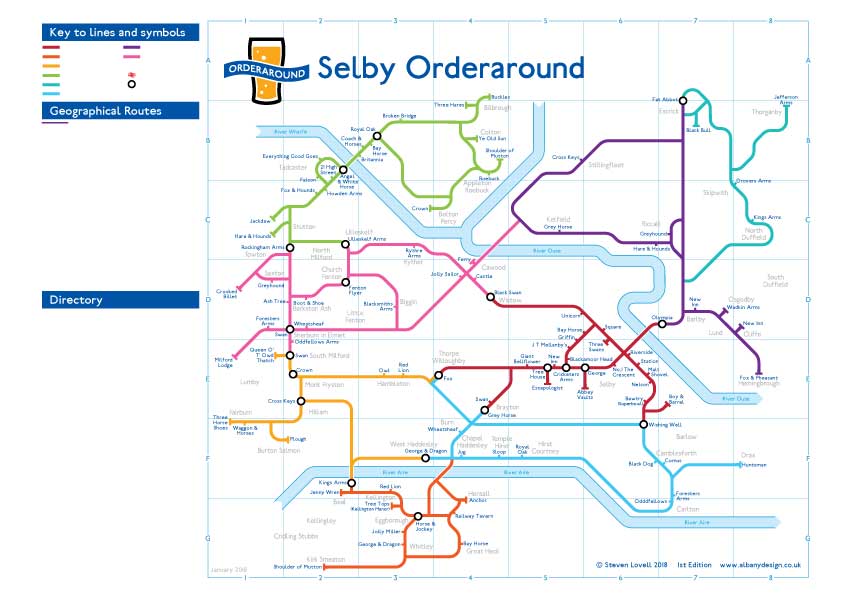
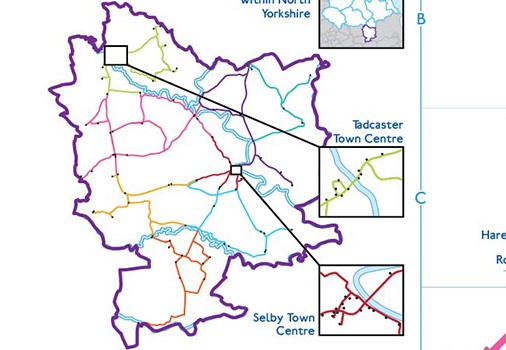
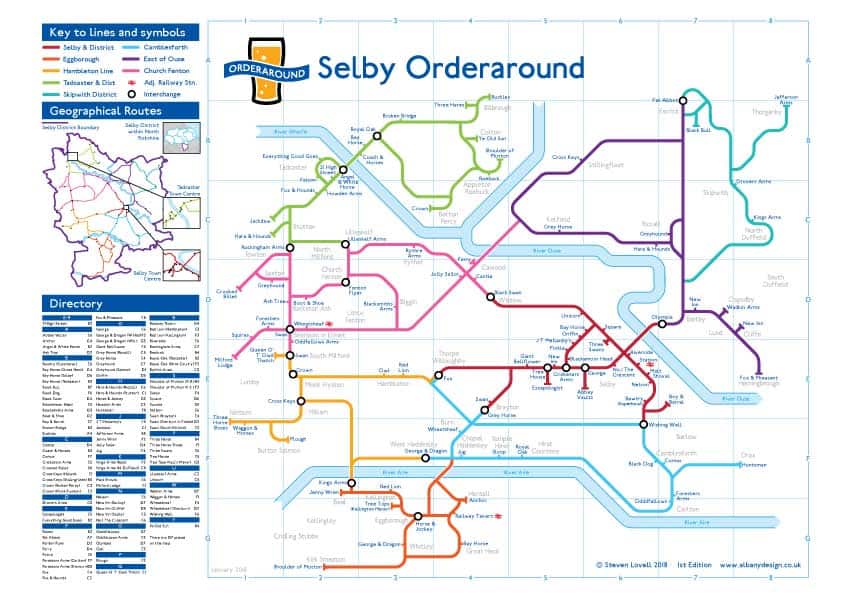
A Legend
As maps grew in number, I needed a wider range of symbols and a standardised repository of elements. This isn’t the same as the “Key” section on the maps, it’s just for me when I’m building them.
I also needed it in two sizes and the colours had to be adapted for output from two types of printer, that vary.
Colours
The colours have four naming conventions:
- Number
- Colour description
- Area of Leeds it was first used for
- CMYK colour values
Symbols
Some maps have types of places that others don’t. So there might be a special symbol for bars on a boat, or a student union bar that’s open all year to non-students for example.
I generally avoid including cubs,. but sometimes I include them with a “C” symbol to please locals that seem to be insisting on them being added.
Retiring Symbols
I used to include markers next to pubs or bars that were adjacent to a railway station because it felt like a link to the tube map. I ended that in about 2022.
I sometimes update symbols to be clearer too, but I keep a record of deprecated symbols in the legend.
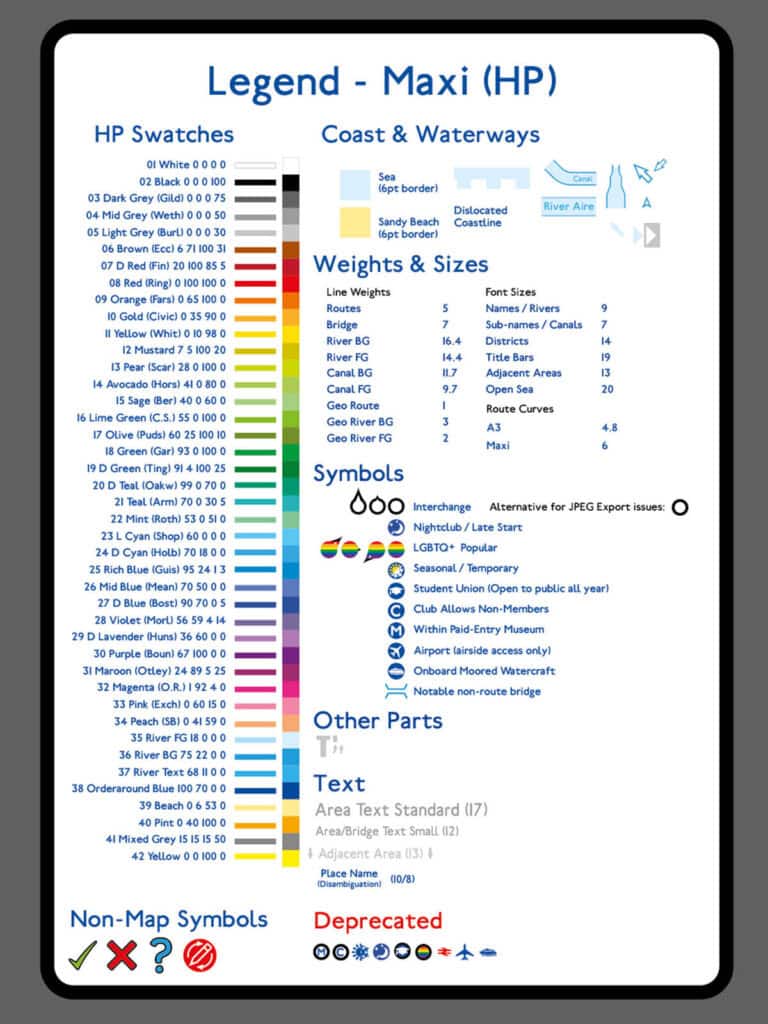
Poster Notes
On the large maps (and sparse smaller ones) I include notes to help people understand some of the design choices:
Official names may differ from those shown, as most instances of common prefixes and suffixes such as “The”, “Inn”, “Bar”, “Club” and “Hotel” have been omitted for space and clarity.
Directions and distances between pubs and bars or geographic areas should not be directly inferred due to localised scale distortion.
All routes follow recognised geographic roads and/or pedestrian paths.
Alignment to one side or the other of a route does not necessarily correspond with the side of the road an establishment is on. (For space and/or balance purposes.)
Places without a permanent building have a “Temporary / Seasonal” symbol, but don’t feature a name label.
Many hotels, cafés and restaurants have been included on the map where there appears to be a welcoming, comfortable and easily accessible space for having a casual drink without food or other services.
Whilst generous evaluation criteria have been applied, assessment and inclusion of all establishments is discretionary and subjective.
With some limited exceptions, the following types of licensed premises are generally not included on this map:
• Bars within most leisure or cultural facilities such as cinemas, theatres, sports venues, art galleries, museums and exhibition centres.
• Venues that are primarily activity-based rather than drinking-focused (e.g. karaoke, snooker, pool, axe throwing, crazy golf, roller or ice skating, ten-pin bowling).
• Private members-only clubs.
• Sports and social clubs or those with a primarily political or religious affiliation.
• Gentlemen’s clubs and XXX-related venues.
• Ticketed entry entertainment venues.
• Student Union bars.
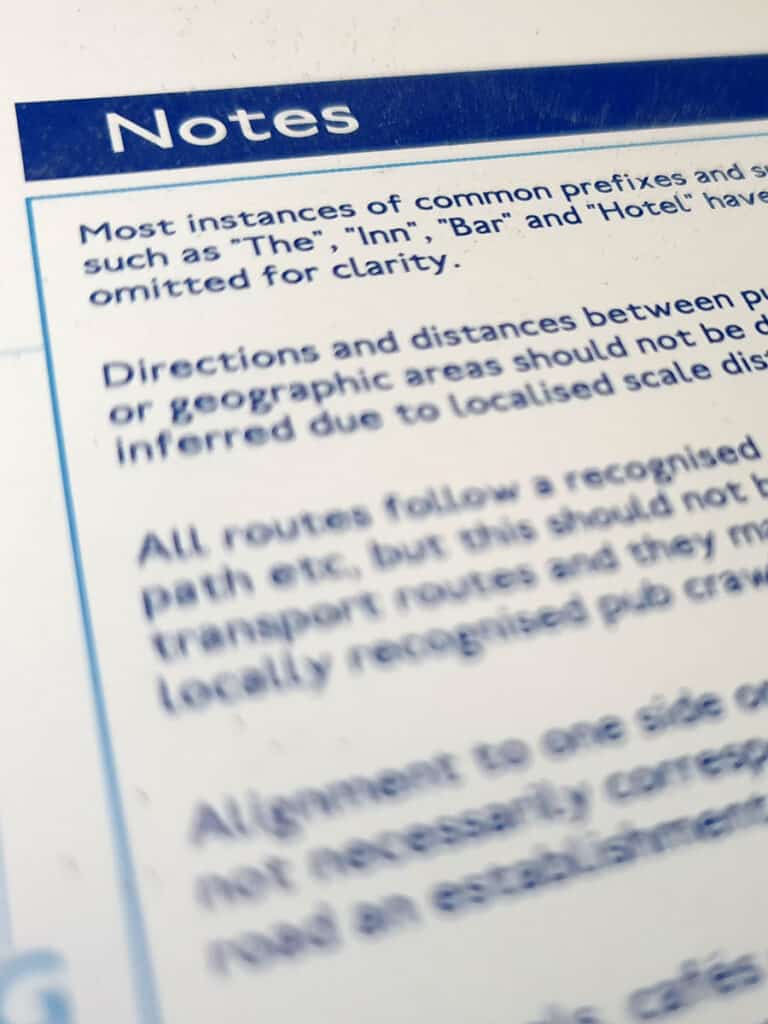
Printing
Originally, I got all posters done via a professional printer. I had no alternative, but it meant paying up front for lots of posters I might not sell. And very often, that meant hundreds of pounds for 500 posters, and I’d sell maybe a few dozen over the course of several years.
in 2017 I bought a second-hand Xerox Phaser 7500 from York. I began printing the smaller A3 maps myself.
In 2021 I bought an HP Designjet Z2100 from Hull, that I now print the larger “Maxi” size maps with.
I actually have two printers of both types due to problems I had with both, and buying replacement used printers has unfortunately been cheaper than even a callout charge for an engineer.

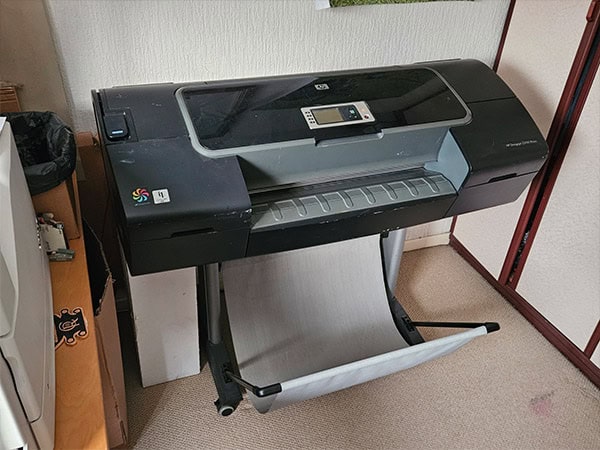
Promotion
For maps closer to home, when I’d just about completed the design I usually went to visit the area I’ve done it for, take a few photos and have a drink or two. Then I’d maybe contact a newspaper. Now that I’ve covered all of Yorkshire, it’s not always practical to visit new map areas.
I also ask for feedback from local Facebook groups in case anything has closed, opened or changed.
Ideally, the local newspaper will then feature an article on it. With any luck, with exposure from Facebook posts and any media there’ll be a short flurry of interest but sales soon die down. If I even get any at all.
I don’t usually go on Facebook to overtly sell it, as lots of groups don’t allow things like that. By asking for feedback, it gets round that. And sometimes people will ask how they can buy one.
I’ve also tried Facebook advertising before, but it was costly and ineffective, so I haven’t done that for quite a number of years.
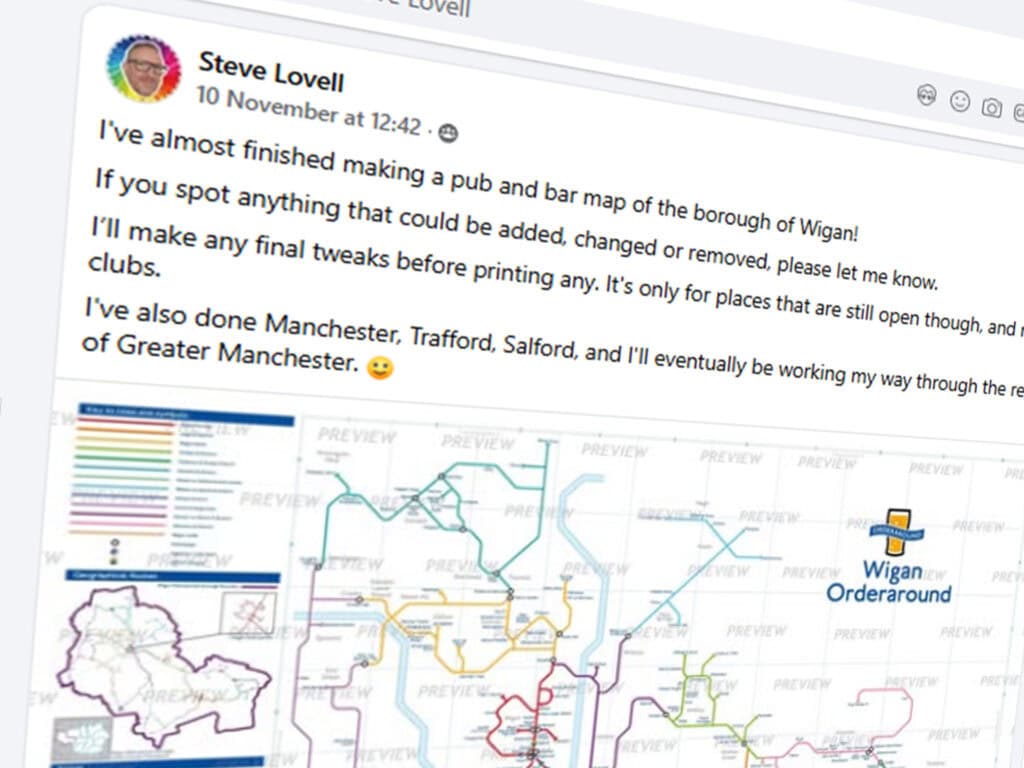
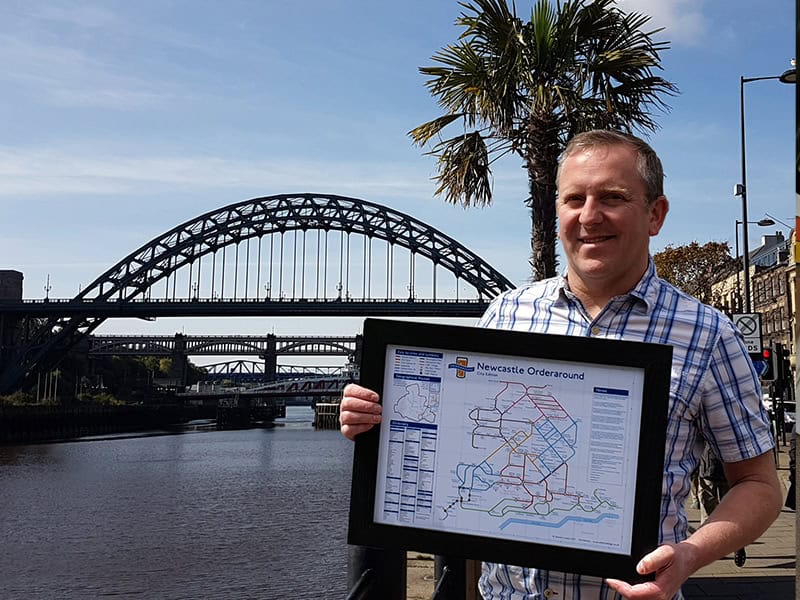
In the Media
I’ve appeared in quite a number of regional newspapers, but this isn’t happening as frequently as it once was.
I’ve been interviewed quite a number of times on the radio and by journalists. One media website even prompted me to write the article myself. So doing their job for them and writing about myself in the third person seemed weird.


Popularity issues
Some maps are more popular than others and because some get no interest at all, it can be a gamble to spend a lot of time on making one if it turns out to be far from worthwhile. (But not as much of a gamble as paying hundreds of pounds for them first!)
I no longer feel like there’s no longer any choice about whether an area is worthy of making a map for. If it’s borders an area I’ve already done, it almost has to be another area I’ll do a map for.
Leeds has been the most popular by a long way but interest in maps for some places like Newcastle has been surprisingly disappointing.
Sales
There may be a trickle of random purchases through the year and then I just have to hope that a few more orders will come in before each Christmas. I very wrongly thought that the initial popularity of the Leeds map would be the same across all areas. I also thought that the more maps I made, the more sales I’d have. Sadly, neither of these has been true.
The maps barely keep me in beer money, but anything I get from them is much appreciated and needed.
Bulk Disposal
Eventually, I had thousands of unsold, out of date posters. So, in December 2021, I got most of them and waved them off at the paper bank bin in a local car park. They were a combination of Leeds, Wakefield, Kirklees, Calderdale and Newcastle.
I kept a few hundred of them for covering tables whilst doing craft work etc.
